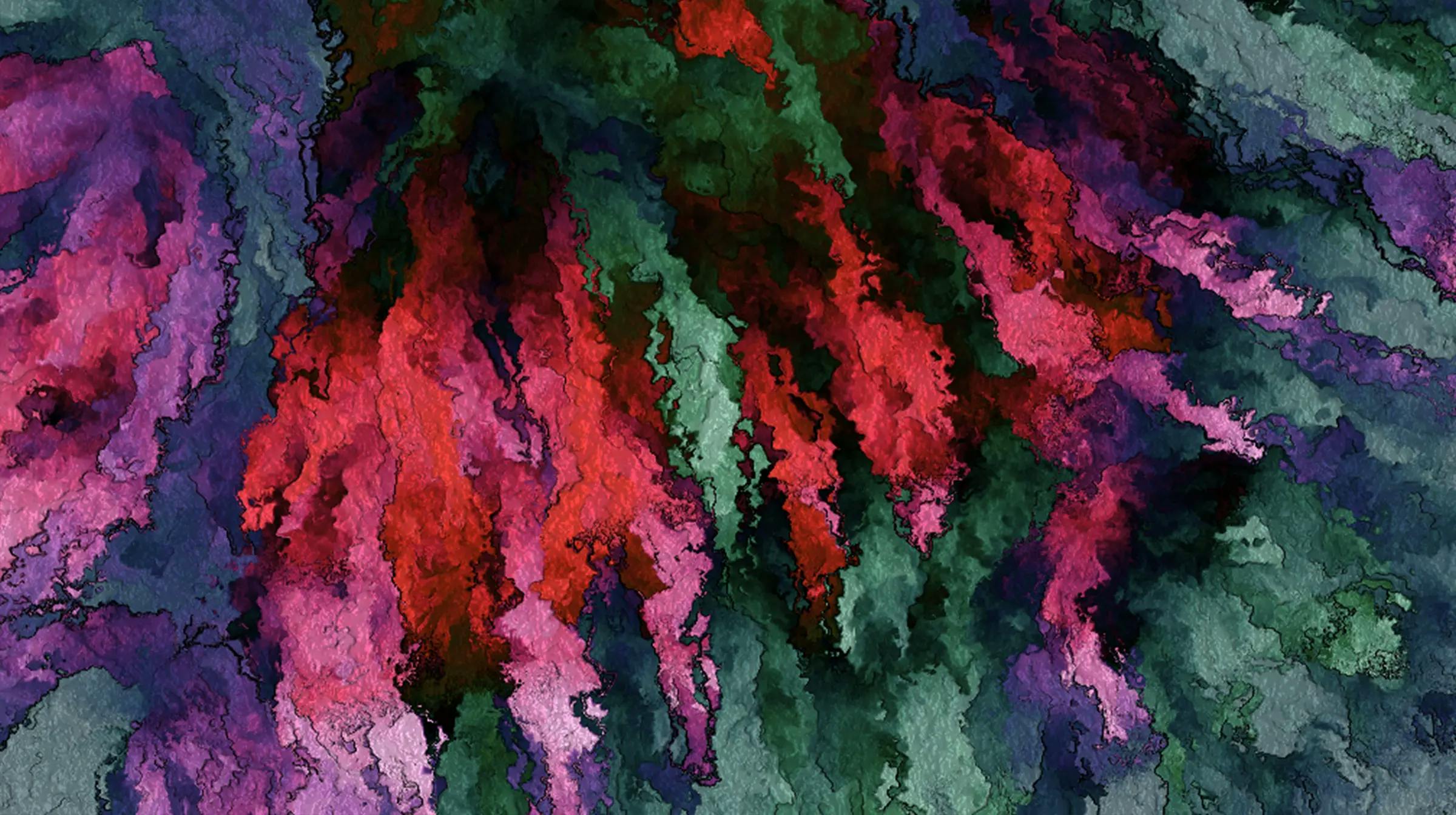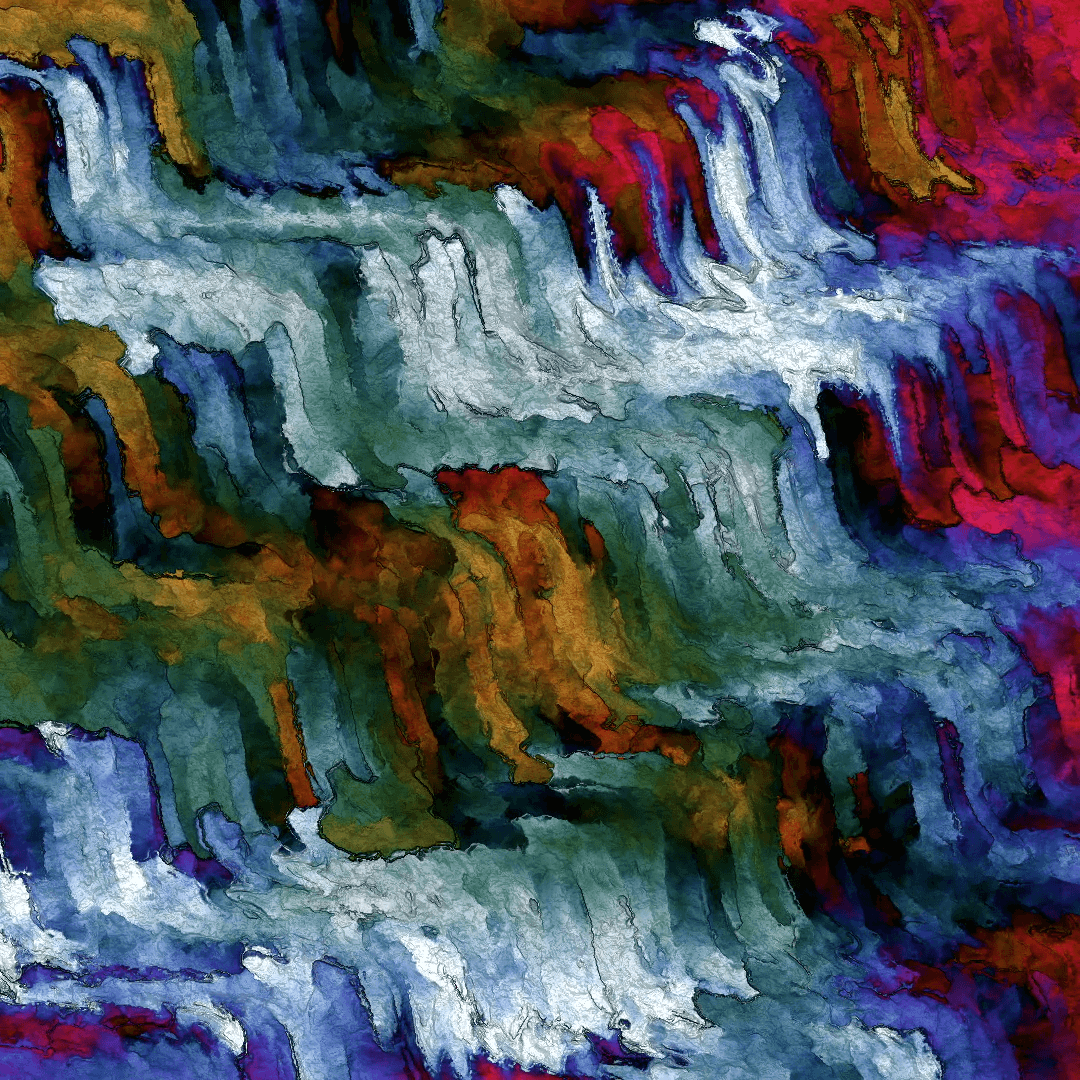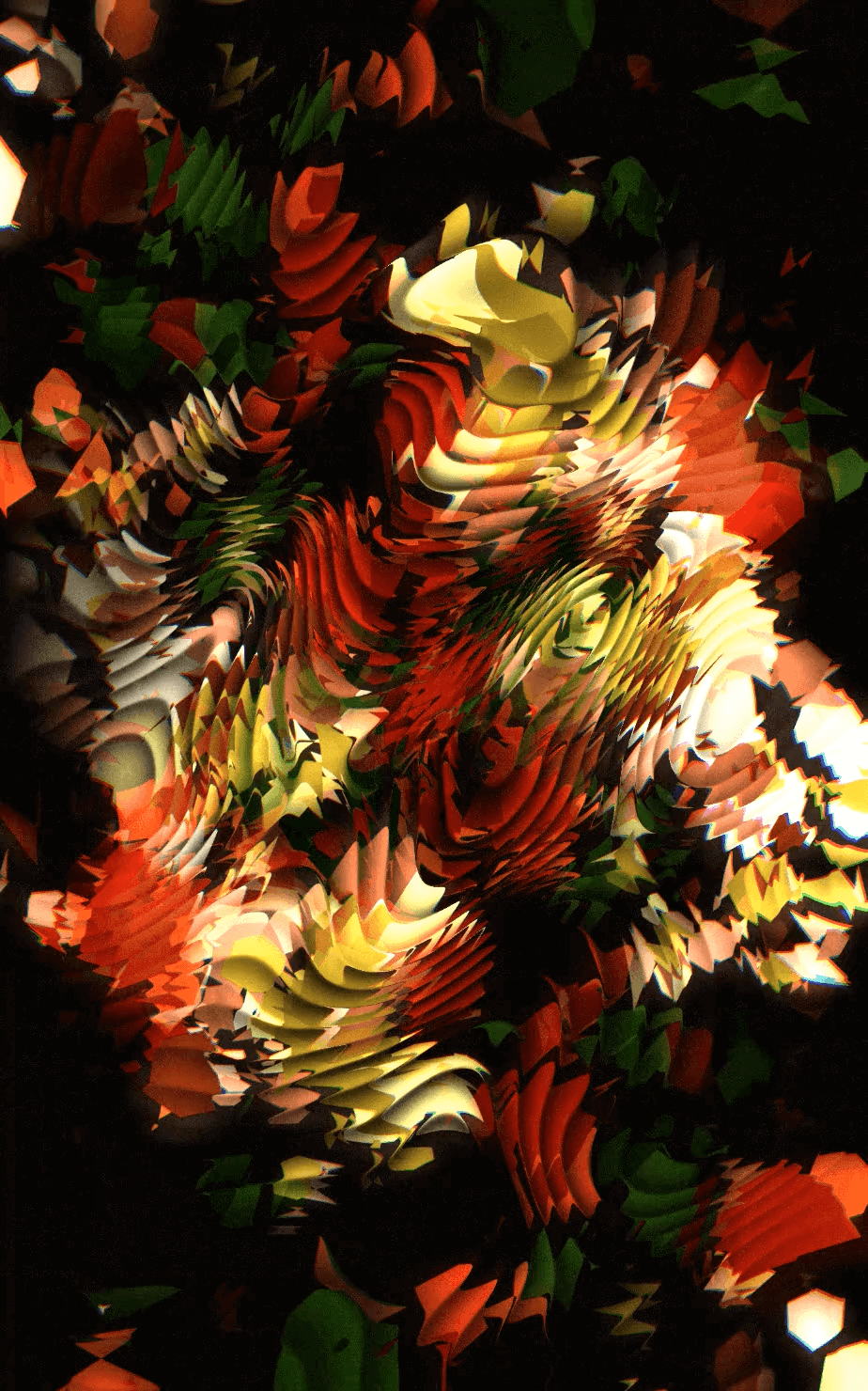After Dark: Around the Fire
In spite of many similarities, animated generative art is fundamentally different from a screensaver, because it's meant to reward our attention.
Jan 29 - Feb 2

Something magical happens when people gather around a fire. We stare into the flames, and conversation starts to flow. Our minds relax, and we make connections between new ideas. From roaring winter hearths to beachside bonfires, some of the best discussions we have are around fires as we contemplate their mesmerizing movements. In the light of the glowing embers, new associations materialize and new synapses coalesce as we link disparate topics in ways we'd never seen before.
Perhaps the only reason the shower ranks higher as the place for fresh ideas is because we do it every day. So what if we could sit more often in front of a fire to loosen up our thinking and make these unexpected breakthroughs?
In our technological age, the closest thing we have to a fireplace is most likely the television. It's often the nucleus of our living rooms. We circle our chairs around it. It's where we gather to warm ourselves at the end of a hard day. Instead of staring awkwardly at one another, we stare at our shows.
But there's a surprising byproduct. If smart TV owners sit long enough talking with someone after an episode has ended, a screensaver will usually appear. With the problem of screen burn-in less of an issue today, it's an unexpected vestige of a bygone era. From Apple's landscape drone shots to Roku's animated illustrations to Chromecast's ambient mode slideshows — the slowly drifting images are engaging and contemplative. Many a good post-show conversation has happened as we stare entranced by the animated images. Those images serve the fire's same role of visual focal point, allowing our minds to relax as they put us under their hypnotic spell.
Cinders by Ella
Soon, people will be able to further personalize their screens to display digital art in their homes — because art is often at its best when you can live side by side with it — and, in that moment, animated generative art has the potential to become the modern day fireplace. It becomes the visual focal point of a space: more meaningful than a drone shot, more rewarding than a slideshow, and capable of creating an inspiration space for fresh ideas.
With five outstanding generative artists, Andrea Belloni, Ella, Ilithya, Itsgalo, and Julien Labat, After Dark: Around the Fire is a celebration of the groundbreaking meditative, animated generative art happening today, thanks to shaders and OpenGL. These five projects point to the type of digital art most likely to gift us this Promethean experience of sitting before the fire, and unlocking our doors of perception.
Buffers by itsgalo
Unfortunately, not everyone loves an animated piece of digital art. There's been a bizarre misunderstanding that the worst insult you can level at a digital work of art is that it looks like a screensaver. Which is odd, because many screensavers are art in and of themselves; they've been featured in museum shows across the world, from the Het Nieuwe Museum in the Netherlands to the cinema-centric Museum of the Moving Image (MoMI) in New York. Even when they don't rise to the level of art, screensavers are iconic works of design. You can instantly call the look of one to your mind's eye. They are important cultural artifacts ingrained in the cultural consciousness as deeply as The Starry Night — notably, also the title of an early screensaver. Which is why this group show shares part of its title with the iconic screensaver series After Dark (1989), most famous for its flying toasters and early animated aquariums.
Last year marked the 40th anniversary of the birth of the screensaver. Apple released their first personal computer, affectionately named Lisa, which included a setting to dim the screen after several minutes of inactivity. A few months later, John Socha published an article in Softalk giving readers code in Basic that they could use to compile their own program, titled Scrnsave, to turn off the screen by flipping a bit on the display adapter. For the first time, they gave users a way to avoid burn-in, where the electrons that create an image on screen would scrape away parts of the phosphor layer from the glass until it eventually etched a residual image that appeared on the screen even when you turned off your monitor.
Ethereal Fauna by ilithya
But beyond their functional purpose, screensavers in their earliest design were meant to be a moment of whimsy during the drudgery of the work day. They brought us delight, from a bouncing piece of geometry to a bad dog tearing up our desktop, without distracting us for more than a few seconds from our work. Striking a balance between professional and playful, they had to be understated enough to work across a hundred office screens all running the same animation at the same time without pulling too much attention. And they had to run on 10 MHz computers, with other applications operating in the background, without freezing up or causing the computer to crash — all at a time when computers weren't that capable of running graphics in the first place. Screensavers in their heyday were an incredible feat.
And, like algorithmic art today, the early screensavers from After Dark, and its predecessor Magic (1988), parameterized variables and invited randomness into the process. In the Starry Night cityscape, you could adjust the building height or the amount of lightning arcing across the sky. With Magic you could set the line length, as well as moire and color speed. And for the famous Flying Toasters, you could adjust the number of “flying things” and how burnt the toast was. These were early generative systems, an important precursor to the long form generative art movement of today.
The biggest difference in some ways between the cultural artifact of the screensaver and the animated art we're beginning to display in our homes is that modern generative art is meant to reward our attention — to attract our eyes, hold our gaze. It wants us to be present, and to be present in our lives even when we sit down at the keyboard and get back to work. The work is incomplete without our participation. We may need to read an artist's statement to grasp it more fully, but we will have a richer experience if we put in the time.
Fearful Symmetry by Andrea Belloni
Not all animated art will work well in the context of the home. The frenetic animations that immediately grab our attention in a gallery, because they're energetic and eye-catching, would be difficult to have next to you while you sit on your couch every day (your brain might start to melt). To get the feeling of the fireplace effect, we need a lyric animation that can create space for the unexpected encounter. Its deliberate slowness might hurt its reach on social media, but it's that exact same trait that rewards a person's steady attention when they live side by side with a piece for years. In our age of corporate techno-authoritarianism, with algorithms telling us where to place our attention, sitting before a single work of art and giving it our time is an act of resistance.
As the Buddhist teacher John Tarrant once said, “Attention is the most basic form of love. Through it, we bless and are blessed.” So let us bless these works with our attention, with our time — with our love — and in return may we be blessed. We are at our best when we hold back our judgements and approach a work with open hands, even a piece that others judge to be a screensaver. So open your hands, and may the spark of good conversation, fresh synapses, and new ideas find you as you warm your hands around your digital fireplace in the years to come.
Pneumon by Julien Labat




